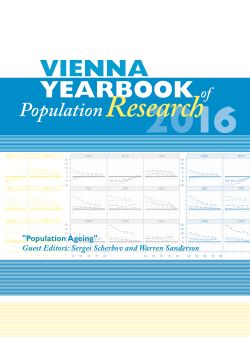
Vienna Yearbook of Population Research 2016, pp. 187-228, 2024/12/12
Special issue on “Population ageing”

In this paper, we use new models to convert subjective expectations elicited from individual responses into conditional survival functions.We also estimate the effects of individual characteristics and assess the impact of health shocks on individual updates of subjective expectations. We use Health and Retirement Study (HRS) data from 1992 to 2006. By and large, our results confirm past empirical findings, but also identify patterns not documented in previous research. We show that the subjective probabilities are remarkably close to the results of actual life tables constructed from observed data, that whites underestimate their survival chances more than blacks, that women underestimate their survival chances more than men, and that the subjective underestimation of conditional survival increases with age in all population subgroups. We find significant differences in the survival outlooks of the original HRS cohort and a more recent HRS cohort (1992 versus 2004). These differences persist after introducing suitable controls. The observed mortality differentials between smokers and non-smokers, obese and non-obese individuals, and high-education and low-education groups are quite close to those of these subgroups’ subjective survival expectations. Finally, we find large updating effects that result from recent health shocks on subjective expectations.
Keywords: Demography; Aging; Survival Expectations